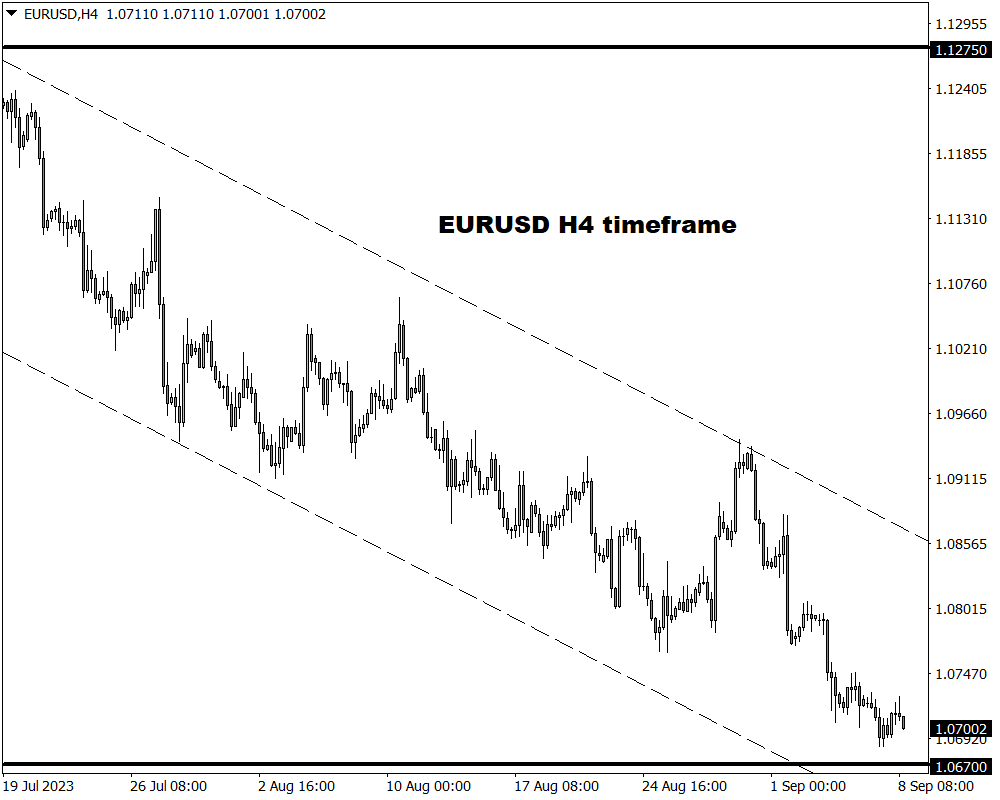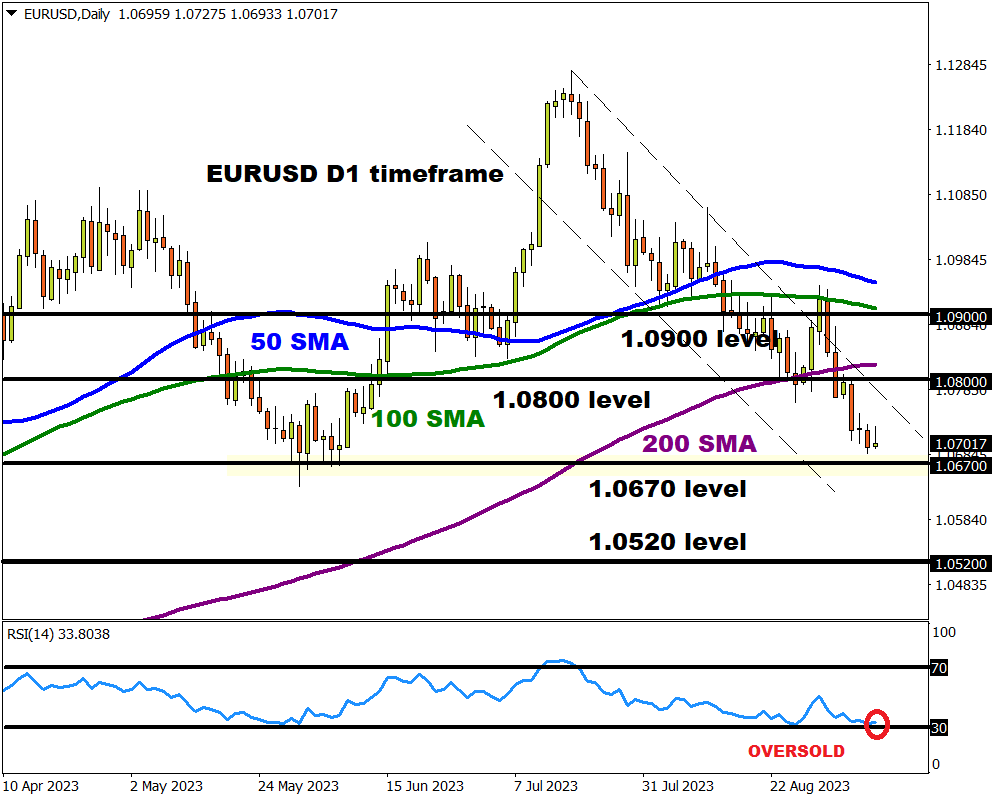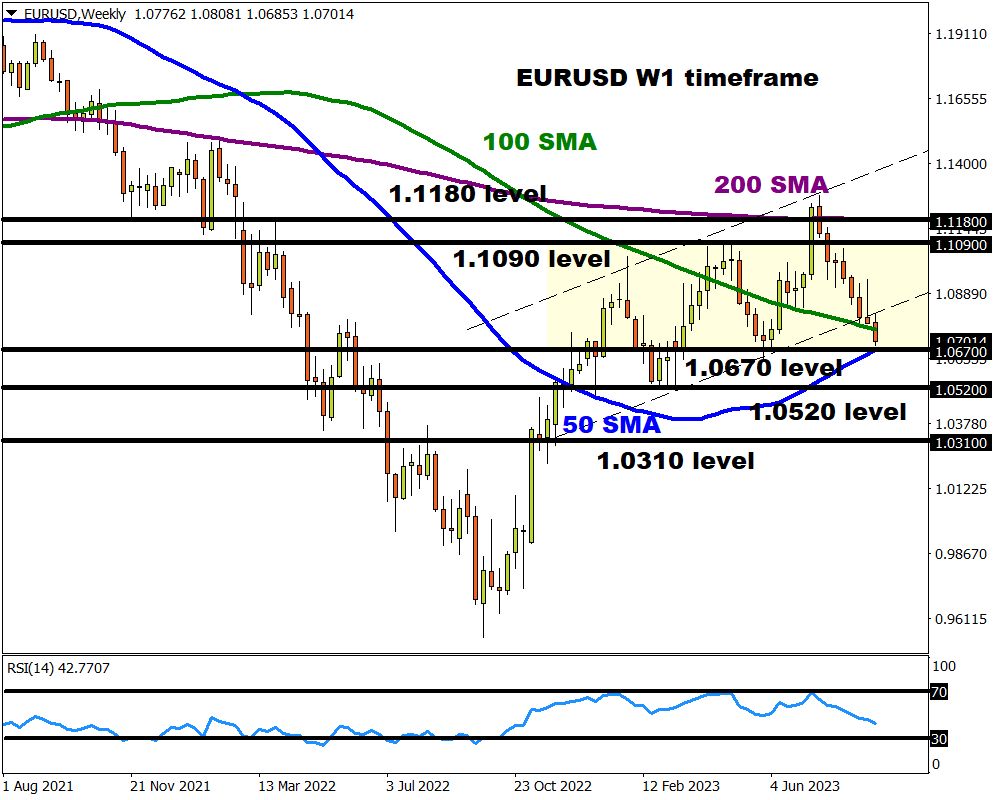Get ready for another wild week for global financial markets thanks to key economic data releases and high-risk events!
Inflation data from the largest economy in the world will be in focus along with a rate decision from the ECB.
But before we identify what asset to keep an eye on, here’s a rundown of the scheduled data and events for the upcoming week:
Monday, September 11
- CNH: China aggregate financing
- EUR: EU releases updated economic forecasts
- GBP: Bank of England chief economist Huw Pill speech
Tuesday, September 12
- AUD: Australia consumer confidence
- EUR: Germany ZEW survey expectations
- GBP: UK jobless claims, unemployment
Wednesday, September 13
- EUR: Eurozone industrial production
- JPY: Japan PPI
- GBP: UK industrial production
- USD: US August CPI
Thursday, September 14
- AUD: Australia unemployment
- EUR: ECB rate decision
- JPY: Japan machinery orders, industrial production
- USD: US retail sales, PPI, initial jobless claims
Friday, September 15
- CNH: China property prices, retail sales, industrial production
- CAD: Canada existing home sales
- USD: Industrial production, University of Michigan consumer sentiment
We could see some thrilling trading opportunities as high-risk events unfold across financial markets. However, all eyes will be on the world’s most popular traded currency which is primed to be heavily influenced by the ECB rate decision and key US reports.
Before we dissect the factors that could trigger a significant move in the EURUSD, it’s worth noting that prices remain heavily bearish on the H4 charts. The euro has shed over 1% against the dollar since the start of September with prices approaching key support at 1.0670. The events in the upcoming week may dictate whether prices experience a breakdown or rebound.

Here are 3 reasons why the EURUSD has our attention:
ECB meeting
The ECB rate decision on Thursday, September 14 is expected to be a close call.
Markets seem to be betting against the European Central Bank raising interest rates by 25 basis points next week with traders currently pricing in a 35% probability. This jumps to 58% by October and 70% by December.
Although inflation remains sticky, economic data across the region continues to disappoint which has raised questions around how much headroom the ECB has left to keep raising rates. However, ECB policymakers have warned investors that the decision to hike rates was still up in the air. Given how this meeting will be complemented with fresh projections for inflation and GDP, the EURUSD could be thrown on a rollercoaster ride.
- The euro could push higher if the ECB moves ahead with a rate hike, but gains may be capped if the central bank signals that this will be the final one in 2023.
- A cautious-sounding ECB that leaves rates unchanged and provides little detail over what its next steps will be may send the euro tumbling.
- We could see a mixed reaction on the euro if the ECB leaves rates unchanged but signals a possible hike at its next meeting.
Top-tier US data dump
Throughout the week, investors will be dished out key US economic reports which could impact the EURUSD.
But it will be wise to keep a close eye on the latest US inflation and retail sales figures which could impact Fed hike expectations.
August’s CPI report will be published on Wednesday, September 13th, and is expected to illustrate a mixed picture. While the headline print is forecast to rise, the core CPI is seen moderating month-on-month and even falling to 4.3% year-on-year versus the 4.7% prior. Regarding US retail sales, this is projected to rise 0.1% versus the prior 0.7%. Ultimately, more signs of cooling inflationary pressures and disappointing economic data may support the argument that the Fed has already ended its hiking cycle.
- Should the US inflation report and overall US economic data print below market expectations, this may weaken the dollar – pushing the EURUSD higher.
- If the incoming US inflation prints above market forecasts and overall US economic data prints above expectations, the dollar could receive a boost – dragging the EURUSD lower.
Bearish technical forces
Since conquering the 1.0800 support level, euro bears have stepped into higher gear with prices slowly approaching the 1.0670 support level.
The EURUSD is heavily bearish on the daily charts with the candlesticks trading below the 50,100 and 200-day SMA. However, the Relative Strength Index (RSI) is signaling that prices are oversold on the daily timeframe.
- A breakdown could be on the horizon with a solid close below 1.0670 opening a path towards levels not seen since March 2023 at 1.0520.
- Should 1.0670 prove to be reliable support, the EURUSD may rebound back towards 1.0800 – a level below the 200-day SMA.

Zooming out on the weekly charts, we see a similar picture with bears eyeing the 1.0670 level. A solid weekly close below this point may see prices test 1.0520 and 1.0310, respectively. If bulls can bounce back, prices may re-test 1.0900 and 1.1180, respectively.
